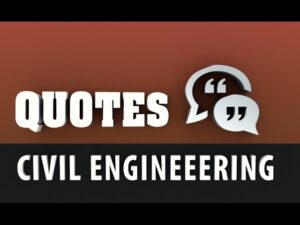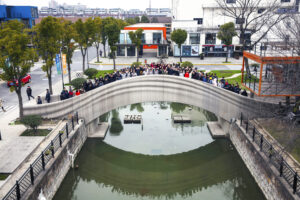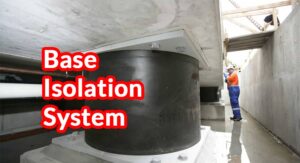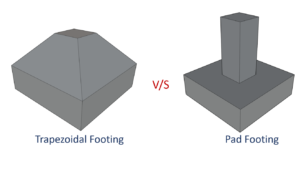
DIFFERENT TYPES OF HOUSE PAINT
Introduction:
For home decor purposes, wall paint is a must-have item. It keeps your home in good shape while also giving it a nice appearance. Painting your walls is an important task that should be completed on a regular basis. When it comes to choosing paints for your home, there’s a lot more to consider than just colour. Furthermore, several types of home paint can be utilized to create a variety of effects while also preserving your walls. There are so many different varieties of house paint that it can be difficult to know where to start when starting a new painting project.
Different types of paints:
1. Distemper Paint:
It’s a low-cost house paint that’s often used in Indian households to whitewash walls. It’s safe and simple to use, but it’s readily marked or discolored. Distemper paint is a type of water-based paint that comes in a variety of vibrant colours. Water, lime, colouring pigments, and chalk are the main ingredients in this sort of paint. It’s possible that it’s a higher mannequin with whitewash paint. Distemper paint can be utilized in both the inside and outside of houses or structures when sturdiness and lifespan are no longer required. The paints are also reasonably priced and readily available in paste and powder versions.

2. Emulsion Paint:
The term emulsion refers to a mixture of two liquids that do not totally mix together. Oil and water, for example, form an emulsion, and the layer of oil in the water can clearly be seen. Water is the principal vehicle/medium in which pigment, binders, and additives are applied and continue to be spread in most emulsion paints. Binders used in paints are polymers that form a continuous film. Epoxy, acrylic, resin, and alkyd resins are some of the binders used in paint formulation. Emulsion paints are flexible, dry quickly, and may be used on both interior and outside surfaces.

3. Enamel Paint:
The smooth fabric is delivered to oil-based paint to create the enamel paint. In addition, petroleum spirit, resinous compounds, zinc white, and white lead can be utilized in enamel paint manufacture. In many cases, the paint’s opaque, glossy, and durable finish can also be quite useful. Moreover, depending on the thinner used, the long-lasting paint may dry quickly or slowly.

4. White Wash:
Whitewash is the most affordable paint colour. Powder, chalk, or slaked lime are mixed with water in an incorrect amount to make the paint substance. It’s commonly used to paint brick partitions and concrete walls, among other things. It’s also possible to use it to paint wood walls in some situations. It’s also blended with adhesive products like Fevicol to make it more colourful and long-lasting.

5. Oil paints:
Oil varnish or oil interior, in which pigment particles are suspended, is the essential vehicle of oil paint. Nut oil, poppy oil, Tung oil, linseed oil, and other oils are possible additions to this list. Other chemicals, such as naphtha and methyl ethyl ketone, may be added to these oil paints.
Oil paints provide a variety of beneficial qualities. They’re stain-resistant, big, long-lasting, smooth, and glossy on top. Oil paints have the disadvantage of emitting excellent fumes that are poisonous and hazardous to human health. Because the paint is less flexible, it is inappropriate for external painting.
6. Cement-based Paint:
Cement, as the most important component of paint, may provide maximum sturdiness and hardness. These paints are a better choice for both interior and exterior walls. Cement paint no longer necessitates the use of natural beeswax or oil. It can also be an excellent choice for an outside surface since it can prevent dirt collection and water penetration. Cement paint is a terrific option for any type of wall, whether it’s an exterior or interior wall, or a concrete wall structure.

7. Acrylic Paint:
Acrylic paint, which is also water-based paint, is the main binding ingredient in this paint. Acrylic paints include acrylic enamel, acrylic latex, and acrylic latex enamel, among others. The paint is more long-lasting. However, because the paint shines brighter, it can also reveal flaws.
8. Anti-Condensation Paint:
Anti-condensation paint is a good alternative if you want to reduce the amount of mildew and mildew in your home’s interiors. Even under humid conditions, these paints will not allow moisture to condense. Cork and various types of fillers may also be used in the paint, which has heat-insulating characteristics. Mold growth is known to be aided by moisture condensation. The use of paint in any location can also help to prevent the spread of fungi.

9. Lead Paints:
Lead paints are safe to use in the house, but they should not be used to paint wood. Lead paint is defined as paint with a lead oxide concentration of greater than 5%. The paint gives any floor a cleanable finish while still being durable and water/moisture resistant.
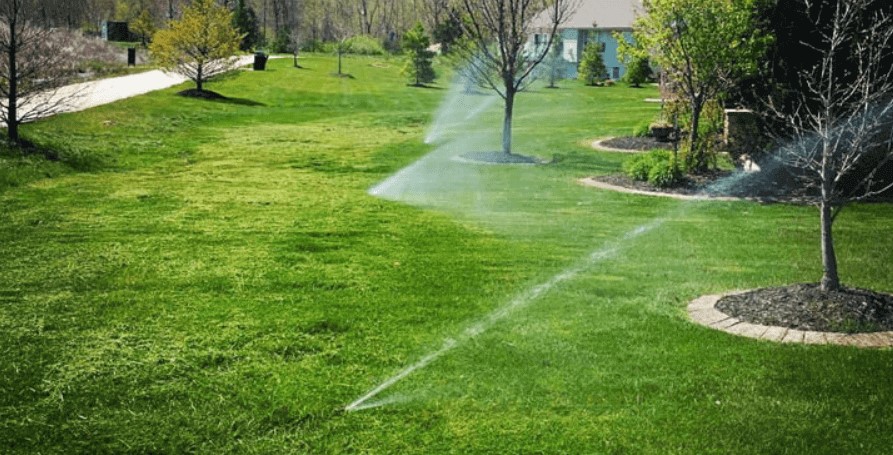
A lawn sprinkler system is forever introduced, instead of a hose-end sprinkler, which is portable. Sprinkler systems are introduced in private lawns, in business landscapes, for chapels and schools, in recreational areas and graveyards, and on greens. The majority of the parts of these types of irrigation systems are covered up underground, since feel are significant in a landscape.
A commonplace lawn sprinkler system will comprise of at least one zones, restricted in size by the limit of the water source. Each zone will cover an assigned piece of the landscape. Segments of the landscape will ordinarily be isolated by microclimate, sort of plant material, and kind of irrigation hardware. A landscape irrigation system may likewise incorporate zones containing drip irrigation, bubblers or different sorts of gear other than sprinklers.
Albeit manual systems are as yet utilized, most lawn sprinkler systems might be worked consequently utilizing an irrigation regulator, now and then called a clock or clock. Most programmed systems utilize electric solenoid valves. Each zone has at least one of these valves that are wired to the regulator.
At the point when the regulator sends capacity to the valve, the valve opens, allowing water to flow to the sprinklers in that zone. There are two primary sorts of sprinklers utilized in lawn irrigation, spring up shower heads and rotors. Splash heads have a proper shower design, while rotors have at least one streams that turn.
Splash heads are utilized to cover more modest regions, while rotors are utilized for bigger regions. Fairway rotors are now and again so enormous that a solitary sprinkler is joined with a valve and called a ‘valve in head’. At the point when utilized in a turf region, the sprinklers are introduced with the highest point of the head flush with the ground surface.
At the point when these types of irrigation system is compressed, the head will spring up out of the ground and water the ideal region until the valve shuts a lot off that zone. Once there is no more pressing factor in the sidelong line, the sprinkler head will withdraw once again into the ground. In flower beds or bush regions, sprinklers might be mounted on over the ground risers or much taller spring up sprinklers might be utilized and introduced flush as in a lawn region.
Manual Irrigation
Manual irrigation systems are not difficult to deal with, require no technical hardware and are thusly commonly modest, however they need high labor inputs. A typical and extremely straightforward procedure for manual irrigation is for example the utilization of watering cans as it tends to be found in peri-metropolitan agriculture around enormous urban areas in some African nations.
A more refined and very water effective kind of manual irrigation system is limited scale drip irrigation with containers. Next to these types of irrigation systems, there are numerous different methods for manual irrigation, which are not difficult to introduce and easy to utilize. By and large, these methods have high self-improvement similarity and a generally elite.
They can be utilized in pretty much every region; except they are particularly adjusted for parched regions where evaporation rates are high. A portion of the essential manual irrigation standards are low-cost drip irrigation systems, watering cans, pitcher irrigation, bottle irrigation, porous and sectioned pipes and perforated plastic sleeves.
Hose-End Sprinkler

There are many kinds of hose-end sprinklers. In this types of irrigation a significant number of them are more modest forms of bigger agricultural and landscape sprinklers, estimated to work with a common garden hose. Some have a spiked base allowing them to be briefly stuck in the ground, while others have a sled base intended to be hauled while connected to the hose.
Sub Irrigation

Sub irrigation has been utilized for a long time in field crops in regions with high water tables. In this types of irrigation, for artificially raising the water table a strategy is used to permit the soil to be saturated from underneath the plants’ root zone. Regularly those systems are situated on long-lasting prairies in lowlands or waterway valleys and joined with waste framework.
A system of siphoning stations, waterways, weirs and entryways allows it to increment or diminishing the water level in an organization of trenches and subsequently control the water table. Sub irrigation is likewise utilized in the business nursery creation, ordinarily for pruned plants. In this types of irrigation system water is conveyed from below, consumed by upwards, and the abundance gathered for reusing.
Regularly, an answer of water and supplements floods a holder or flows through a box for a brief timeframe, 10 – 20 minutes, and is then siphoned once again into a holding tank for reuse. Sub-irrigation in nurseries requires genuinely complex, costly gear and the board. Benefits are water and supplement preservation, and labor investment funds through diminished system upkeep and robotization.
It is comparable on a fundamental level and action to subsurface bowl irrigation. Another sort of sub irrigation is oneself watering holder, otherwise called a sub-flooded grower. This comprises of a grower suspended over a repository with some sort of wicking material, for example, a polyester rope. Through the capillary action the water is drawn up to the wick. A comparable strategy is the wicking bed; this also utilizes capillary action.
